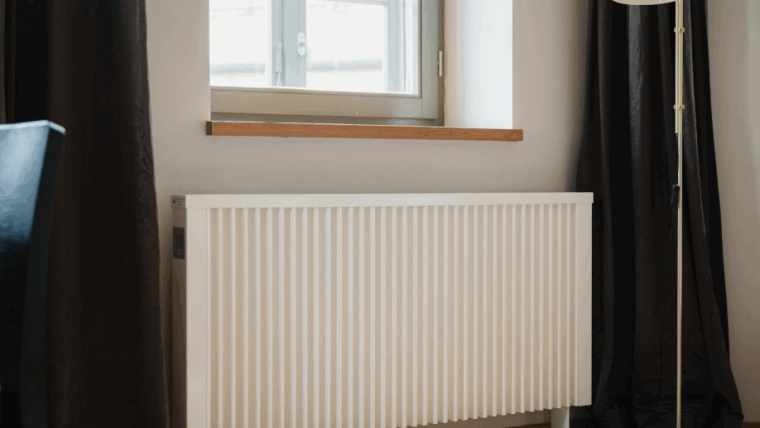
Achieve privacy and comfort with window tinting by selecting the correct film for your needs, such as UV-blocking, heat-reducing, or decorative options. Professional installation ensures smooth application and longevity. Regular cleaning with non-abrasive solutions maintains clarity and performance, enhancing your space’s privacy and energy efficiency.
Table of Contents
Introduction to Window Tinting
Window tinting is a complex process that combines art and science to enhance the aesthetic appeal of glass surfaces. It provides sun protection and energy efficiency and has evolved from simple dyed films to advanced multilayered ceramics. This technology is essential for creating private and energy-efficient spaces in both residential and commercial settings. The process involves applying a fine laminate film to glass surfaces, reducing glare, boosting privacy, and enhancing energy efficiency. Grasping the benefits and technologies behind advanced window tinting is essential for anyone seeking innovative solutions through advanced window tinting Jacksonville FL. This guide provides practical insights into installation and maintenance, allowing informed decisions that align with contemporary lifestyle needs.
Benefits of Window Tinting
Sun Protection
Window tinting provides:
- Comprehensive protection against harmful ultraviolet rays.
- Preventing skin damage.
- Eye problems.
- Premature furniture and fabric fading.
According to the Skin Cancer Foundation, window films block up to 99% of UV radiation, effectively protecting personal health and preserving interior aesthetics. This makes window tinting crucial for maintaining a safe and healthy home or vehicle.
Enhanced Privacy
In densely populated urban areas, privacy is crucial. Window tints provide total inside visibility while protecting inquisitive eyes. This is especially beneficial in high-traffic areas or on lower floors. Tints come in varying transparency levels, allowing users to choose an option that suits their privacy needs without compromising natural light or comfort.
Energy Efficiency
Window tints reduce solar heat entering buildings and vehicles, lowering energy consumption and improving heating and cooling efficiency. They also act as an insulating barrier, reflecting solar energy and reducing air conditioning needs during warmer months. The U.S. Department of Energy highlights the energy-saving potential of window tinting, especially in high-sun-exposure climates. This efficiency supports environmental goals by reducing overall energy demand.
Different Types of Window Tints
The selection of home window tints is as diverse as the purposes they serve. Here are the common types available:
- Dyed Film: The most affordable type offers aesthetic enhancement and moderate privacy. Its primary purpose is to prevent heat and sunshine, frequently making windows look darker.
- Metalized Film: Known for its durability and reflective properties, metalized films enhance strength and shatter resistance. They provide a mirrored surface that also contributes to privacy and glare reduction.
- Ceramic Film: As one of the latest innovations in window tinting, ceramic films avoid the pitfalls of earlier technologies, like interfering with electronic signals. They effectively block UV rays and heat while allowing maximum visibility and clarity.
How Window Tinting Works
Window tinting is when a thin laminate film is applied to the inside or outside of windows. Each film is crafted to minimize glare, reduce UV exposure, and deliver thermal benefits by absorbing or reflecting the sun’s rays. The films have multiple layers stacked to handle different light spectrums, balancing visibility and protection. This delicate engineering ensures that light entering through the tinted glass remains comfortable and does not overheat the interiors.
Choosing the Right Tint for Your Needs
Selecting the right window tint involves considering various factors, including desired privacy levels, climate, and aesthetic preferences. Different tints offer divergences in light filtering, privacy enhancement, and glare reduction. Speaking with an expert may yield insightful advice particular to your situation, guaranteeing that the movie selection complements both your preferences and the surrounding surroundings. Professionals will also help navigate local laws regarding allowable tint levels for vehicles, ensuring compliance with regulations.
Installation Process: A Step-by-Step Guide
While DIY window tinting kits are readily available, professional installation ensures optimal results through precision and care. Here’s an outline of the professional installation process:
- Cleaning the Window Surface: Thorough cleaning improves adhesion by eliminating contaminants and lowering the possibility of bubbles or flaws.
- Measuring and Cutting the Film: The film is cut to fit the window’s exact dimensions, ensuring coverage without overhang.
- Applying the Film: A wet adhesive method is often used to place the film, allowing for fine adjustments to avoid imperfections.
- Smoothing Out Bubbles: Specialized tools remove air pockets and excess moisture, resulting in a seamless, clear finish.
Common Myths and Misconceptions
Despite its advancements and widespread use, several misconceptions about window tinting persist. Some falsely believe that tinting significantly darkens interiors, making them unwelcoming. In reality, modern window tints are engineered to maintain visual clarity and allow daylight transmission while delivering the benefits of reduced UV exposure and minimized glare. Another myth is that tints might hinder visibility, particularly at night, but quality films are specifically designed to enhance nighttime driving by reducing the glare from headlights and streetlights.
Maintenance and Care Tips
Proper maintenance guarantees the lifespan and efficacy of window tints. To avoid scratching the film, use non-abrasive cleaning solutions and soft cloths. Avoid cleaners with ammonia or other harsh chemicals that can deteriorate the tint over time. Scheduled cleaning and routine inspections will keep the tints in optimal condition, ensuring they perform effectively and look as intended for years.
Conclusion
Window tinting is a modern living solution that offers functional and aesthetic enhancements, reducing energy consumption, increasing privacy, and protecting interior assets from UV damage. As technology advances, the scope of window tinting expands, catering to diverse spatial needs and design aspirations. Adopting window tinting is a commitment to a sustainable, compelling future and an investment in real estate.


